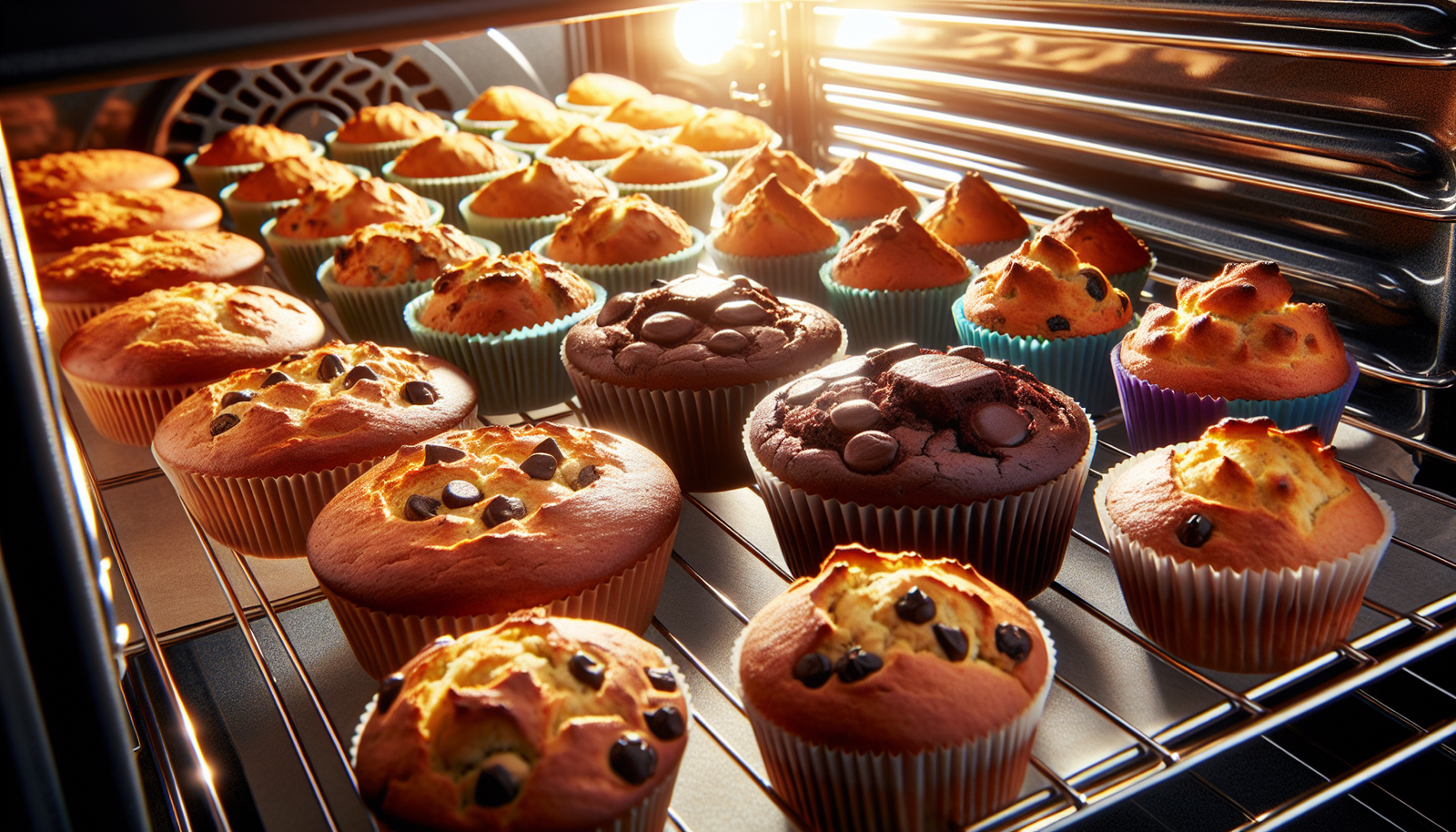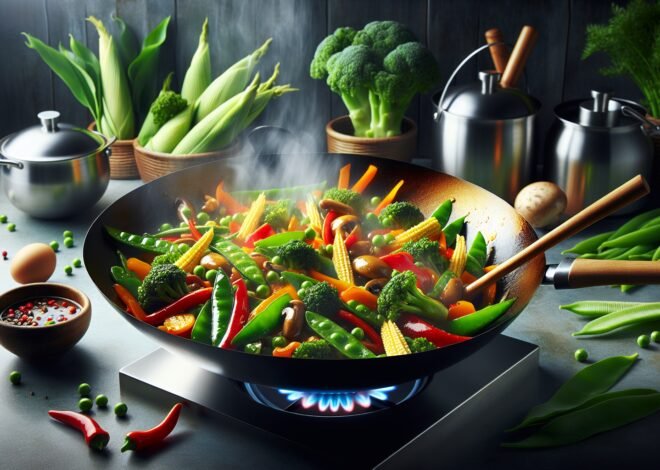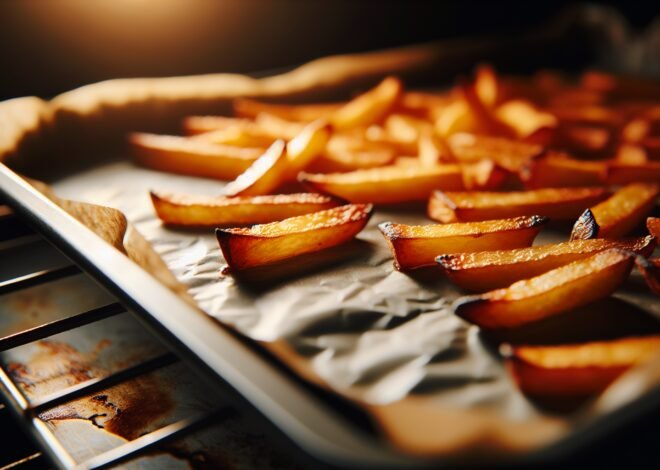
Best Oven Settings for Baking Cakes, Cookies, and Breads
Baking involves more than just mixing ingredients – the oven settings play a big role, too. This guide explores the best oven settings for baking and how to use them for optimal browning, rise, and texture, no matter what you’re baking.
Understanding Key Oven Settings
Grasping the basics of oven settings is essential for any baking enthusiast. The differences between conventional, convection, and broil settings can significantly impact your baking results. Knowing when and how to use preheat and bake options also plays a crucial role in achieving the perfect bake.
Conventional Bake vs. Convection
The debate between conventional bake and convection bake often puzzles bakers. Conventional baking relies on radiant heat from the oven walls, creating a stable environment for recipes that require steady and even heat. It’s ideal for dishes like cakes and cookies, where gentle, uniform cooking is key.
Convection baking, on the other hand, uses a fan to circulate hot air around the oven, providing a more consistent temperature throughout. This setting is excellent for achieving crispy textures, making it perfect for bread, pizza, and pastries that benefit from higher heat and quicker cooking times.
- Conventional bake: Best for delicate recipes requiring gentle cooking.
- Convection bake: Perfect for achieving crispiness and faster cooking.
Broil Setting and Its Uses
The broil setting is often underutilized but offers a quick and direct heat source from above. This setting is perfect for tasks like melting cheese, toasting bread, or giving a golden finish to dishes. Unlike baking, where heat surrounds the food, broiling exposes it to high temperatures from the top, making it ideal for quick cooking or adding texture and color.
Broiling should be done with care, as the intense heat can quickly overcook or burn food. Always keep an eye on your dish, adjusting the rack position as needed to control the distance between the food and the heat source.
Preheat vs. Bake Options
Understanding the distinction between preheat and bake options can elevate your baking game. Preheating an oven ensures that it reaches the desired temperature before you start baking, which is crucial for recipes requiring precise heat. Baking in a preheated oven ensures consistent cooking, even texture, and the proper rise of baked goods.
Skipping the preheat step might lead to uneven baking or undercooked centers. Always wait until the oven signals it’s ready before placing your dish inside. This small step can make a big difference in your baking outcomes.
Common Baking Techniques by Setting
Each oven setting aligns with specific baking techniques. Knowing which settings to use for different baked goods can lead to better results and more delicious creations. Let’s explore how conventional, high-heat, and convection settings impact cakes, pastries, and more.
Cakes and Cookies (Conventional)
Cakes and cookies thrive in a conventional bake setting. The steady heat ensures even cooking, which is crucial for the delicate balance of ingredients in cakes. This method prevents uneven rising and is ideal for recipes needing a gentle, gradual bake to lock in moisture.
For cookies, the conventional setting helps achieve the perfect chewy or crisp texture by evenly distributing heat. Placing cookie sheets on the right rack level can also influence the outcome, ensuring consistent results with each batch.
Pastries and Pies (High-Heat Bake)
Pastries and pies demand a high-heat bake to achieve flakiness and a well-baked crust. This setting encourages the butter in the dough to create steam, leading to the characteristic layered texture of pastries. A high-heat bake ensures that pies develop a crisp bottom while keeping the filling perfectly cooked.
- High-heat benefits: Promotes steam formation for flaky layers.
- Ideal for: Puff pastries, croissants, and fruit pies.
Bread and Pizzas (Convection and Baking Stone)
Bread and pizzas are best suited for a convection setting coupled with a baking stone. The circulating air of convection ovens provides an even bake, crucial for bread that requires a consistent crust and soft interior. The baking stone retains heat, mimicking the conditions of a traditional brick oven, which is ideal for pizzas.
Using a baking stone in a convection oven can improve the texture and flavor of your bread and pizzas, giving them that perfect, artisanal touch. Preheating the stone before placing your dough ensures optimal results.
Tips for Best Results in Baking
Mastering the art of baking involves more than just following recipes. Small adjustments and keen observations can elevate your baking from good to great. Here are some practical tips to ensure you achieve the best possible results every time you bake.
Rack Positioning
Rack positioning significantly affects baking outcomes. Placing dishes in the center of the oven allows for even heat distribution, crucial for uniform cooking. For browning or crisping, placing items on the top rack can enhance surface texture.
Different recipes might require specific rack positions. Adjusting racks to align with the heat source ensures that your baked goods cook evenly and achieve the desired texture and doneness.
Monitoring Oven Temperature
An oven’s temperature can fluctuate, impacting baking results. Using an oven thermometer can help confirm the actual temperature inside, ensuring it matches the set value. This is especially important for precision baking, where slight temperature variations can alter the outcome.
Regularly checking the oven thermometer and making necessary adjustments keeps your baking consistent and reliable. This simple tool can be a game changer, turning out perfectly baked goods every time.
Rotating Pans for Even Baking
Rotating pans during baking can prevent uneven results, particularly in ovens with hot spots. Halfway through the baking time, turn the pans 180 degrees to ensure all areas receive equal heat. This practice is especially useful for items that require even browning and texture.
Rotating pans promotes uniform cooking, reducing the risk of overbaked edges or underbaked centers. It’s a small yet effective step to improve the quality of your baked creations.
Conclusion
Choosing the best oven settings for baking makes a big difference in achieving consistent, high-quality results. Conventional, convection, and broil settings each have unique benefits for different recipes. For example, cakes and cookies bake well with consistent, even heat, while pastries and pizzas benefit from higher temperatures. Understanding these settings allows you to optimize browning, texture, and rise based on the needs of each recipe. With the right settings, you’ll be able to bake treats that look and taste professionally made, with just the right amount of flavor and texture.
FAQ
What’s the difference between bake and broil settings?
Bake uses consistent heat from the bottom of the oven, ideal for cooking food evenly. Broil uses intense heat from above, perfect for browning or crisping the top layer of dishes.
When should I use the convection setting?
Use convection for faster and more even cooking. The fan circulates hot air, making it great for roasting meats and baking cookies. Adjust temperature or time to prevent overcooking.
What’s the best setting for cakes?
For cakes, the bake setting provides gentle, even heat. It ensures cakes rise properly without burning the edges or top. Avoid convection as it can dry out the cake.
Should I use a baking stone for pizzas?
Baking stones absorb heat and evenly distribute it, giving pizzas a crispy crust. Preheat the stone for best results, simulating the effect of a traditional pizza oven.
Does rack position matter for cookies?
Yes, rack position affects heat distribution. Place cookies on the middle rack for even baking. This position ensures the best balance between top and bottom heat.
How can I avoid uneven baking?
To avoid uneven baking, preheat the oven fully and rotate pans halfway through. Position racks correctly and use the appropriate oven setting for your dish.











